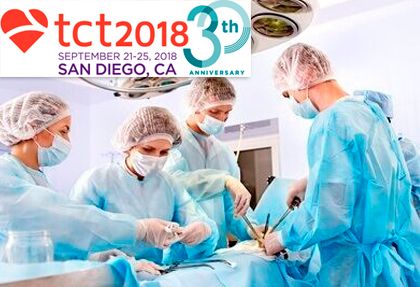Compared against conventional predilation with balloon, rotational atherectomy is associated with higher procedural success rate in severely classified lesions. Balloons capable of modifying plaque such as the Flextome Cutting Balloon or the AngioSculpt Scoring Balloon -among others- could reach similar results to that of rotational atherectomy, though this has not been tested so far.
 200 patients with documented ischemia and severely calcified native coronary lesions were randomized to rotational atherectomy vs. cutting balloon in preparation to stenting, followed by sirolimus bioresorbable polymer-based DES implantation (Orsiro).
200 patients with documented ischemia and severely calcified native coronary lesions were randomized to rotational atherectomy vs. cutting balloon in preparation to stenting, followed by sirolimus bioresorbable polymer-based DES implantation (Orsiro).
The study, presented at TCT 2018 and simultaneously publish in Circulation, had two primary end points: on the one hand, strategy success (successful stenting with <20% residual stenosis and TIMI 3 flow) and, on the other hand, late lumen loss at 9 months.
Read also: TCT 2018 | NEOPRO: A Registry for Acurate neo and Evolut PRO.
Procedural success was superior for rotational atherectomy (81% vs 98%; p=0.001) though with mean 5 more minutes of fluoroscopy time. Late lumen loss resulted non-inferior for both strategies. Need for revascularization and definite stent thrombosis rates were similar with both strategies.
Conclusion
Preparing severely calcified lesions with rotational atherectomy has higher procedural success than with cutting balloons. In time, operators will acquire the experience to know when to use rotational atherectomy and will learn to cross over when the simpler strategy won’t work.
Original title: A Randomized Trial of High-Speed Rotational Atherectomy Prior to Drug-Eluting Stent Implantation in Severely Calcified Coronary Lesions.
Presenter: Gert Richardt.
PREPARE-CALC-artículo-original
Get the latest scientific articles on interventional cardiologySubscribe to our weekly newsletter
We are interested in your opinion. Please, leave your comments, thoughts, questions, etc., below. They will be most welcome.





